
PLAY Introduction
Knowing where to start is the hardest part! This play is here to help you figure out what to do first and how to prioritize what to do next. Use this play for project work, product development or just to get that to-do list done!
PEOPLE
1-6 people per group. Multiple groups can run this play at the same time.
TIME
30-60 Minutes. No one wants to be in a meeting longer than needed. Try to keep it short and sweet.
NINJA LEVEL
Novice to Master. Anyone can run this play.
PREP WORK
PEOPLE
This play works best with people who have different ideas and unique points of view. Group together people who challenge each other.
PLACE
Virtually or in-person it is critical that everyone has face-time with each other. So make sure that if attending virtually that everyone can connect in video chat. This play is dependent on breaking out into groups, each group will need a sub-room to meet in for prioritization work.
THE PLAY
All of our plays are five steps or less! However, you may need to run multiple plays to get the most out of this one. Don’t worry – you can do it! Learn the play, rehearse it regularly, apply it in the field and debrief on the outcomes. If it worked well, use it again; if it didn’t, find out why. Are there new factors in the system you need to consider, or do you just need to keep practicing? If you need help or have questions on this play, contact us!
01
SET THE STAGE
Who are the players?
Every winning team knows which players to have on the field and what talent you need on the ready. To successfully deploy this play you will need the following roster:
![]() Meeting Facilitator: Likely this is you! But you don’t have to do it alone, ask a friend (think of it like a football team that has a coach for different parts of the team). Skills needed:
Meeting Facilitator: Likely this is you! But you don’t have to do it alone, ask a friend (think of it like a football team that has a coach for different parts of the team). Skills needed:
- Keep the team focused on the goal!
- Foster a positive and creative space for all.
- Organized and prepared to run play.
![]() Team Players: This is someone who actively contributes to the team in order to complete tasks, meet goals or manage projects. Team players aim to improve the product or process at hand. Every organization relies on good teams. Skills needed:
Team Players: This is someone who actively contributes to the team in order to complete tasks, meet goals or manage projects. Team players aim to improve the product or process at hand. Every organization relies on good teams. Skills needed:
- Communicate effectively.
- Is the 3R’s: Responsible, Reliable and Ready
- Optimistic and future-focused.
- Shows genuine commitment.
- Supports and respects others.
- Embraces collaboration.
- Actively listens.
- Problem solver.
Get the field ready!
![]() Schedule the meeting in advance. Don’t wait until the last minute to schedule the meeting. You want people to be excited about it but not so last minute that they have no time to prepare.
Schedule the meeting in advance. Don’t wait until the last minute to schedule the meeting. You want people to be excited about it but not so last minute that they have no time to prepare.
![]() Include an agenda. Set expectations – this will help keep your meeting on track. Include schedule and any prep work needed. Also let them know if it is okay to invite others or not. Remember that if you have to many people in the meeting, it will be difficult to facilitate brainstorming sessions without breaking out into smaller groups.
Include an agenda. Set expectations – this will help keep your meeting on track. Include schedule and any prep work needed. Also let them know if it is okay to invite others or not. Remember that if you have to many people in the meeting, it will be difficult to facilitate brainstorming sessions without breaking out into smaller groups.
![]() Prep the room. Arrive early and get ready. If it is in a physical room, get whiteboards ready, enough chairs for everyone, water and snacks are always a hit! If virtually, a central location for notes, brainstorms and follow-up items. Test connectivity in the meeting room and make sure there is enough seats for all participants.
Prep the room. Arrive early and get ready. If it is in a physical room, get whiteboards ready, enough chairs for everyone, water and snacks are always a hit! If virtually, a central location for notes, brainstorms and follow-up items. Test connectivity in the meeting room and make sure there is enough seats for all participants.
02
CORE ACTIVITIES
TEAM INTRODUCTION
Teams must be great at working together to win. This play is better if the groups feel comfortable working together. You may want to run a couple of ice-breaker activities from step three to get conversation going.
- Give the teams 5 minutes to introduce themselves and get the conversation going. Have them share a fun fact about themselves like least favorite food, next vacation spot, best local spot, favorite childhood game, favorite sweet treat. The idea is that it is a quick round table ice-breaker.
THE LIST
Before you can prioritize the list, you need a good group of items that need prioritizing. Don’t boil the ocean in one pass, start with a small group of items. No more than 3 items per person on average. If the group is small, you will be able to manage up to 5 items per person.
- Start with the main goal, what is the objective? It should be a single statement that is shared with the group. Write that at the top of the whiteboard (each group will need a whiteboard).
- Pass stickies to the team and have them write what needs to be done in order to reach the goal. It should be a single statement. and can be done on it’s own without the need of any other item The key is that they are related but not dependent one one another. Set the timer and limit time to come up with ideas (no more than 15 minutes). To get great lists, run the Defining Requirements play in step three.
- Next prep the whiteboard for the pitch. Draw a 3×3 grid on the board with “Value” on the Y-axis and “Cost” on the X-axis
THE PITCH
This is where the team will learn about the list of items needed to reach the goal. If even if the person isn’t the original author, how can they sell the idea. This is good practice for anyone, and the more you do it, the easier it is!
- Each person must pitch their ideas in front of the team
- 1-3 minutes TOTAL (keep a timer, it helps)
- Uninterrupted time – no questions from the team or input
- Basic concept, how it creates value, and what it might cost to do – for EACH idea
- After completed – thank the team
- Team round of applause
VOTE
This is the difficult part of the play, however, the output of this is the most valuable piece.
- Group similar ideas together and then place the stickies on the whiteboard in the grid. Two criteria needs to be analyzed for each sticky:
- Value: How does the deliverable of this item contribute to the overall goal (High, Medium or Low)?
- Cost: How costly will this be (High, Medium or Low)?
- Get the team to agree on placement of idea on board. This can be done by voting techniques such as majority wins, thumbs-up/thumbs-down, dot voting or what works best for your groups.
- An easy system is to have the task author state what they think is the value score and then call for a thumbs-up or down vote, and if the majority of the team agree, it is that rank. Then the author states cost score and again calls for a thumbs-up or down vote.
- Place stickies on board (grouping like ideas together). The board will look like this.
A PRIORITIZED LIST
Stand back and look at your prioritized list. Items in the upper-right corner are the biggest bang for your buck. Now that all the hard work is done, let’s talk about the board.
Do First
- Ideas can be considered “easy wins” or “low-hanging fruit”
Do Next
- Ideas are high-value but moderate-cost and should be evaluated for ways to reduce cost
Consider Next
- Ideas are moderate-value but low-cost and should be evaluated for ways to increase value
Rethink
- Ideas are high-value but high-cost and should be evaluated for ways to bring cost to moderate level
- Ideas are moderate-value but moderate-cost and should be evaluated for way to reduce costs and increase value
- Ideas are low-value but low-cost and should be evaluated for way to increase value
Forget About It
- Ideas are moderate-value but and will not be considered until changes in items reduce cost and/or increase value
Remove
- Ideas are low value but high cost and should be removed from the idea board
- This might be a pet-project
- Stay focused on only ideas that are worth doing
- Remember the goal is to work on the ideas that bring value
Recap
1.Do First! High Value/Low Cost
2.Rethink … increase value or lower cost
3.Forget about mediocre ideas
4.Remove low value and high cost ideas
Want to learn more about dot voting? Check out this article by Sarah Gibbons on NN/g
03
 TEAM HUDDLE
TEAM HUDDLE
Time to run the Team Huddle play. Ask the team the following questions and then take a vote. Keep follow-up questions to a minimum and capture any issues raised as an offline follow-up (and be sure to follow-up).
Understand the play?
![]() The play was understood and I asked any questions in time!
The play was understood and I asked any questions in time!
![]() I’m not sure I understand and I have some questions …
I’m not sure I understand and I have some questions …
![]() I did not understand the play or my part in it.
I did not understand the play or my part in it.
Did you get in the game?
![]() Yes, I made my moves and was in the right place at the right time!
Yes, I made my moves and was in the right place at the right time!
![]() I’m not sure I understand what I was supposed to do …
I’m not sure I understand what I was supposed to do …
![]() I kept the bench warm and watched from the sidelines.
I kept the bench warm and watched from the sidelines.
Ready for what’s next?
![]() Yes, I know the game plan and ready to win!
Yes, I know the game plan and ready to win!
![]() I’m not sure what’s next or if I am involved …
I’m not sure what’s next or if I am involved …
![]() No clue what’s next and would rather sit it out.
No clue what’s next and would rather sit it out.
04
NEXT STEPS
You did it, celebrate with the group! You can use this same technique to prioritize any list of things. You may need to adjust the x-axis term for the situation, but now you know how to prioritize your life.

![]() Publish your prioritized list in a central repository that the team has access to immediately. Even better if it is someplace that the team can add comments or collaborate on. Keep the creative chat going!
Publish your prioritized list in a central repository that the team has access to immediately. Even better if it is someplace that the team can add comments or collaborate on. Keep the creative chat going!
The team may need to refer back to the list as time moves forward to keep focused on delivering high-value outcomes. As things change you may want to do a quick review play to determine if any item should move on the grid and regroup to align on what should be done next.
05
IT’S A WRAP
You did it! Now just a few follow-up items:
- Reflect on the play. Ask yourself how it went? What could have gone better, what could have gone worse? In sports this is watching the game again to see any plays that could have been better. Update your playbook. Build feedback loops that help you see what’s working; what’s not; and how to continue to develop the playbook by learning, adapting and iterating constantly as situations change and new challenges arise.
- Contribute to the community of Playbook.Ninja. Sign-up for an account and receive updates on when new plays are added and help others by commenting on the plays with what worked or your experience.
Thank you for being a Playbook.Ninja
![]()


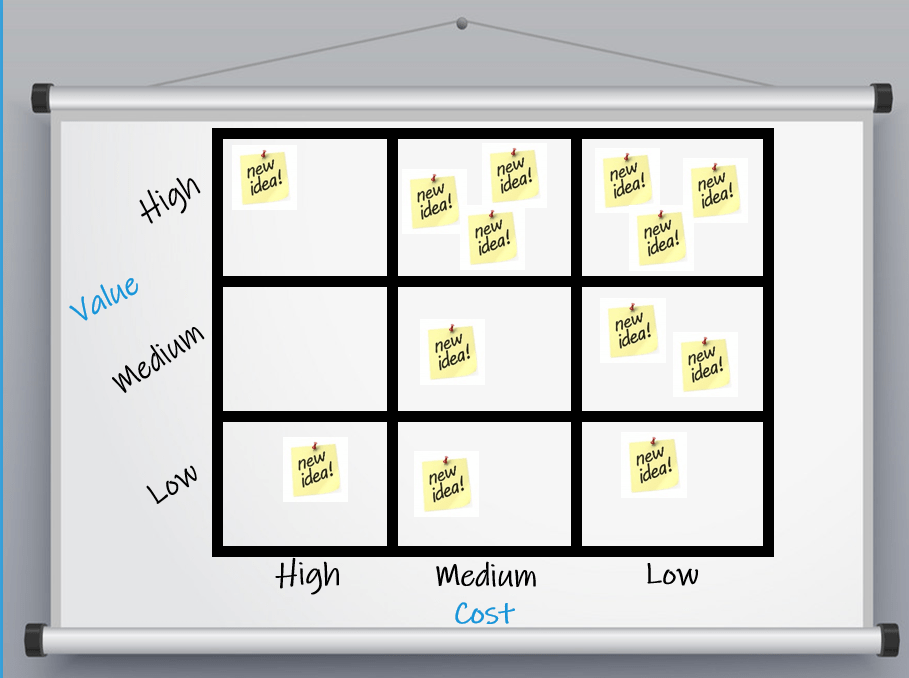
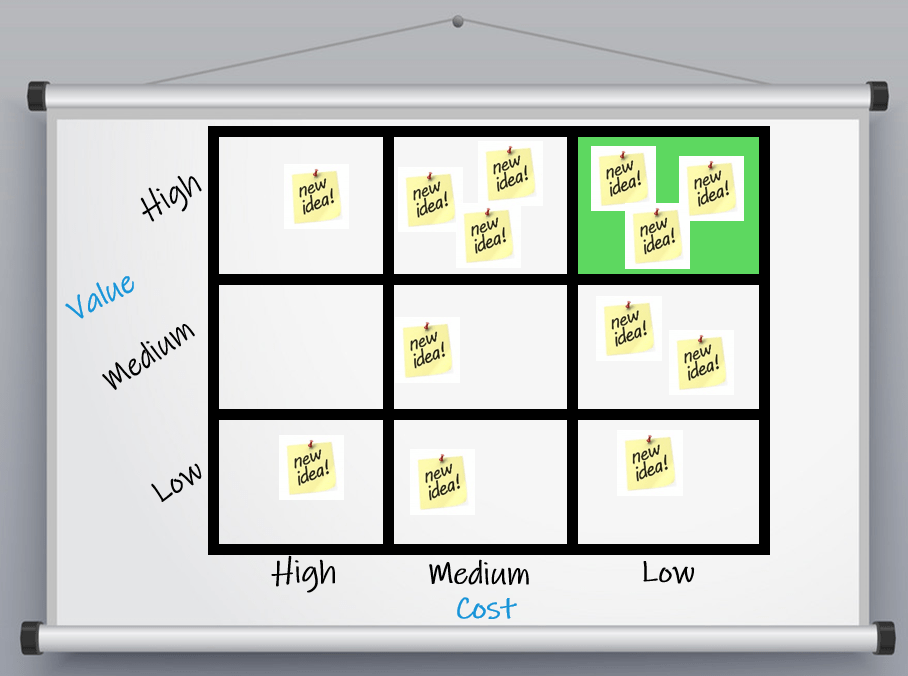
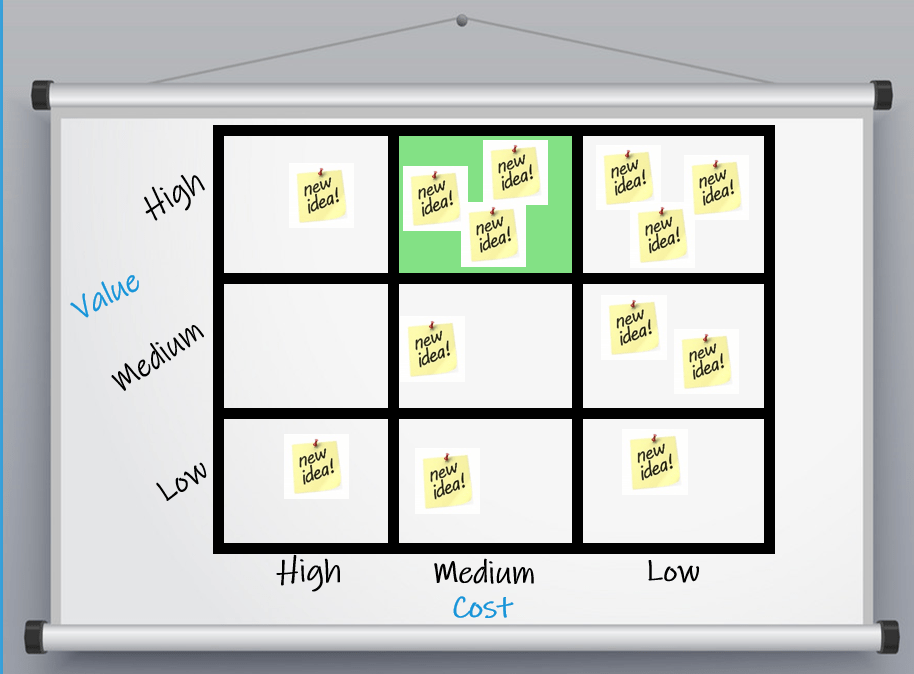

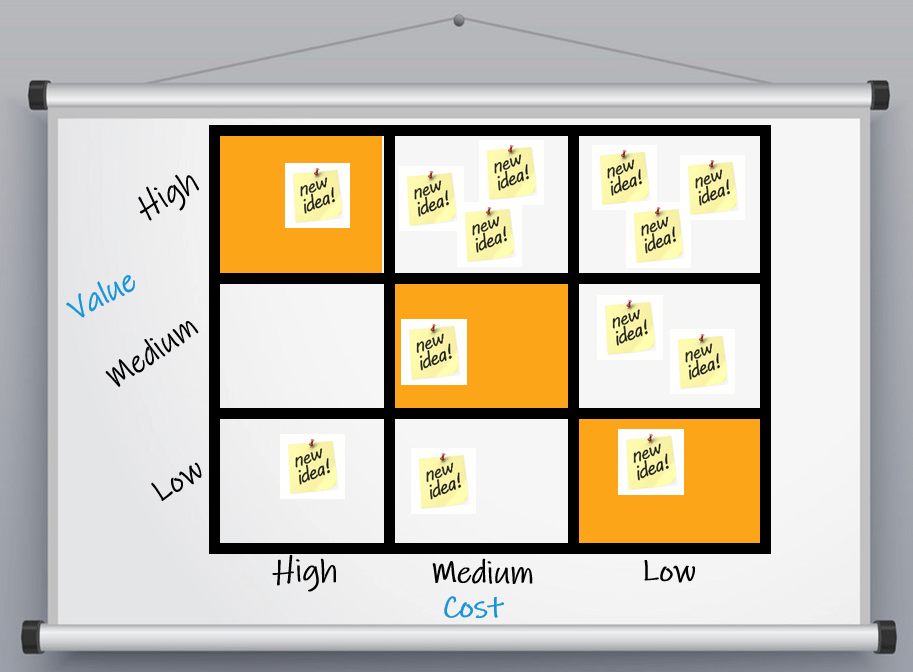
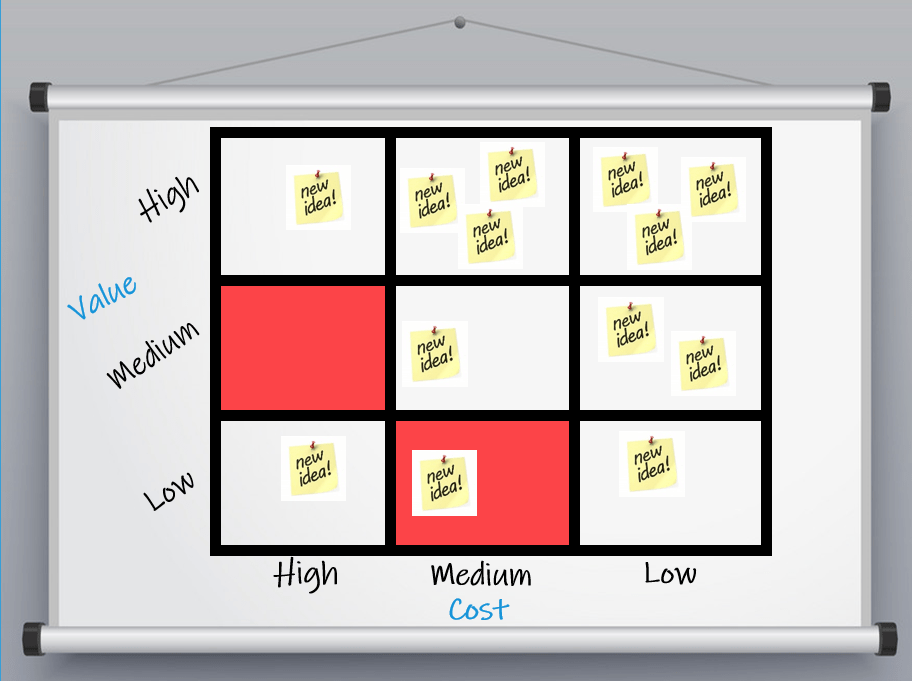

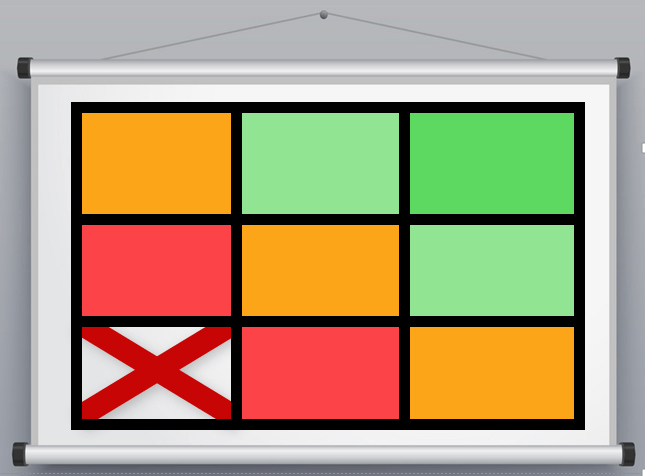
 TEAM HUDDLE
TEAM HUDDLE